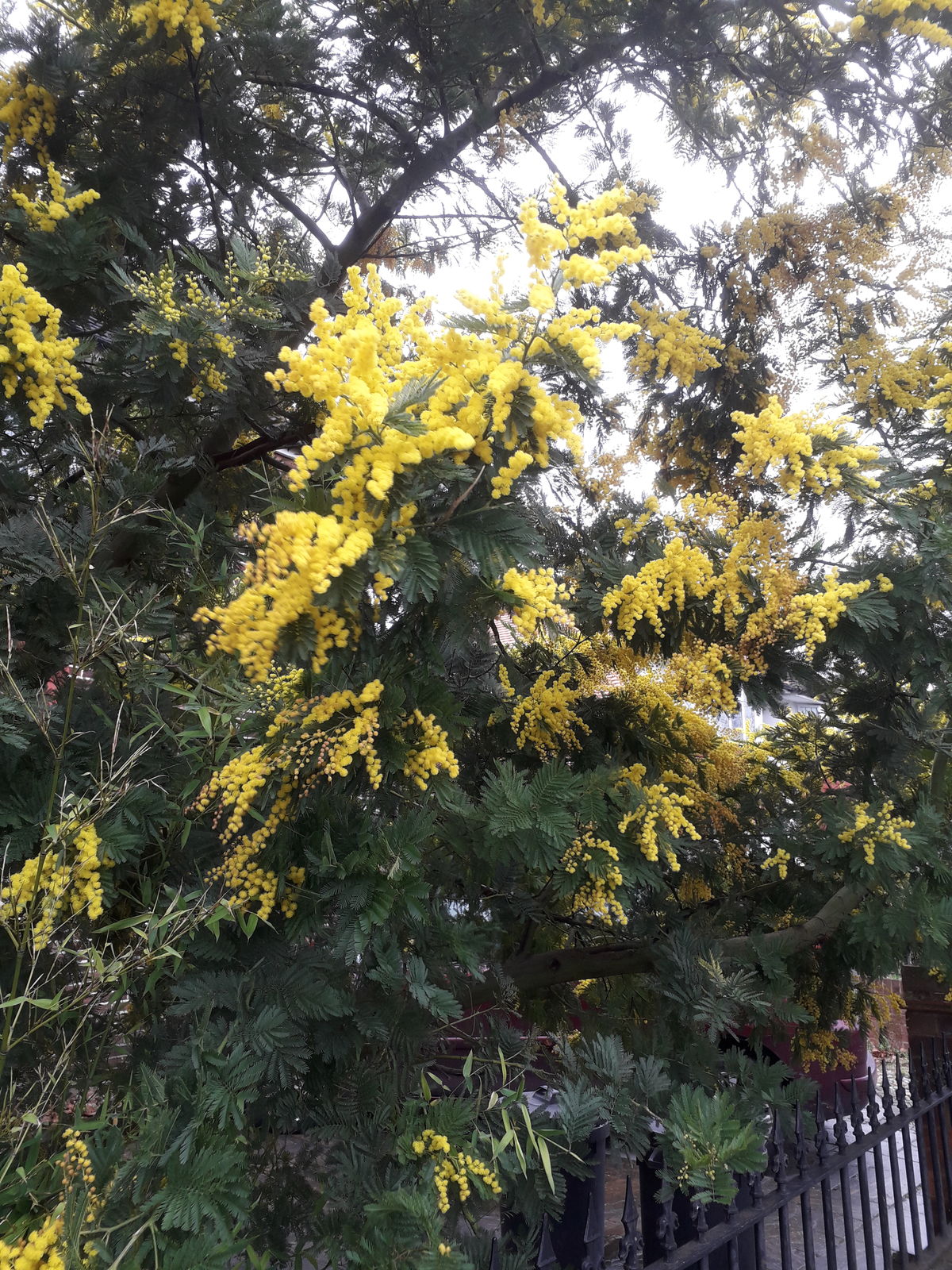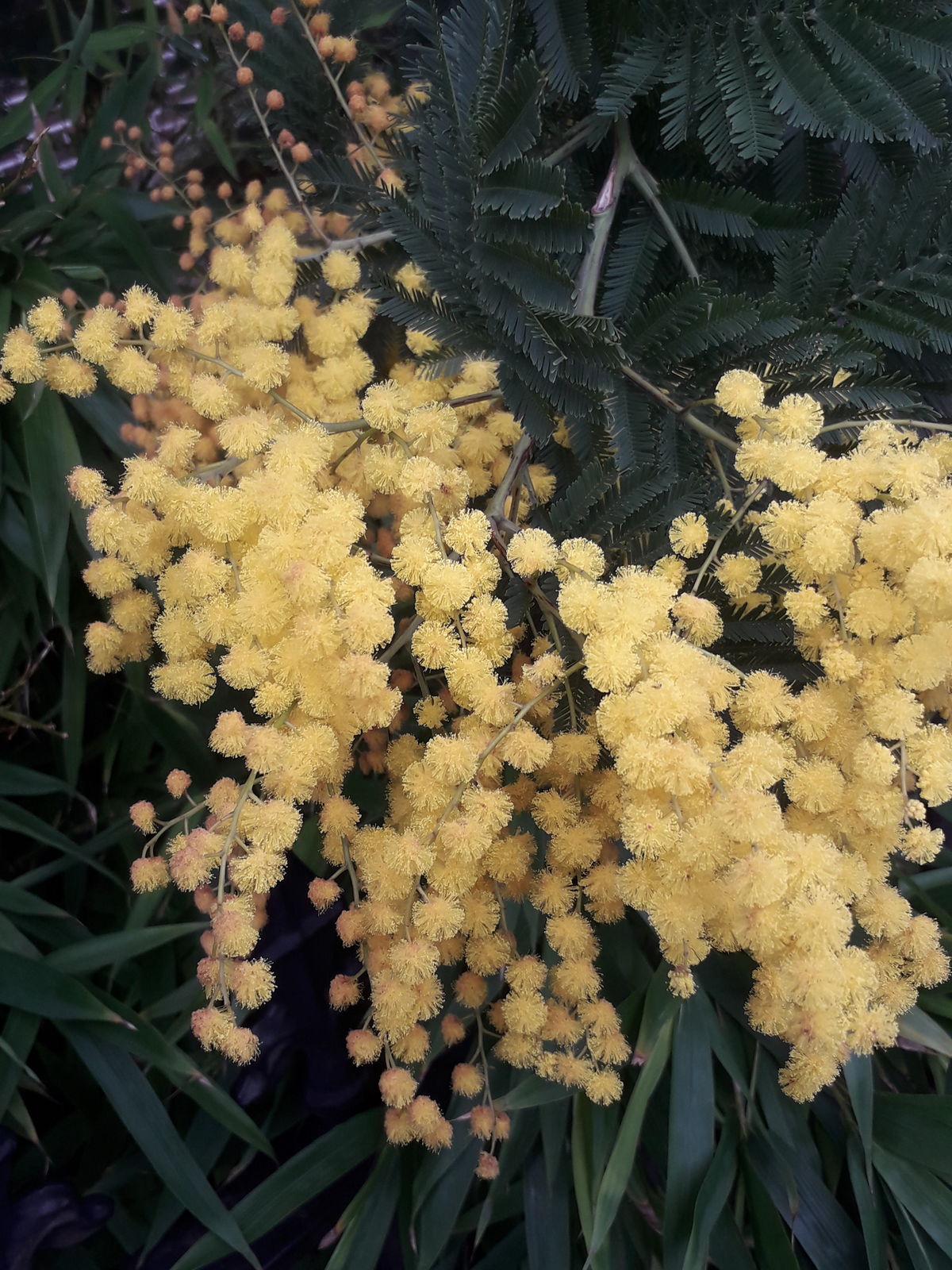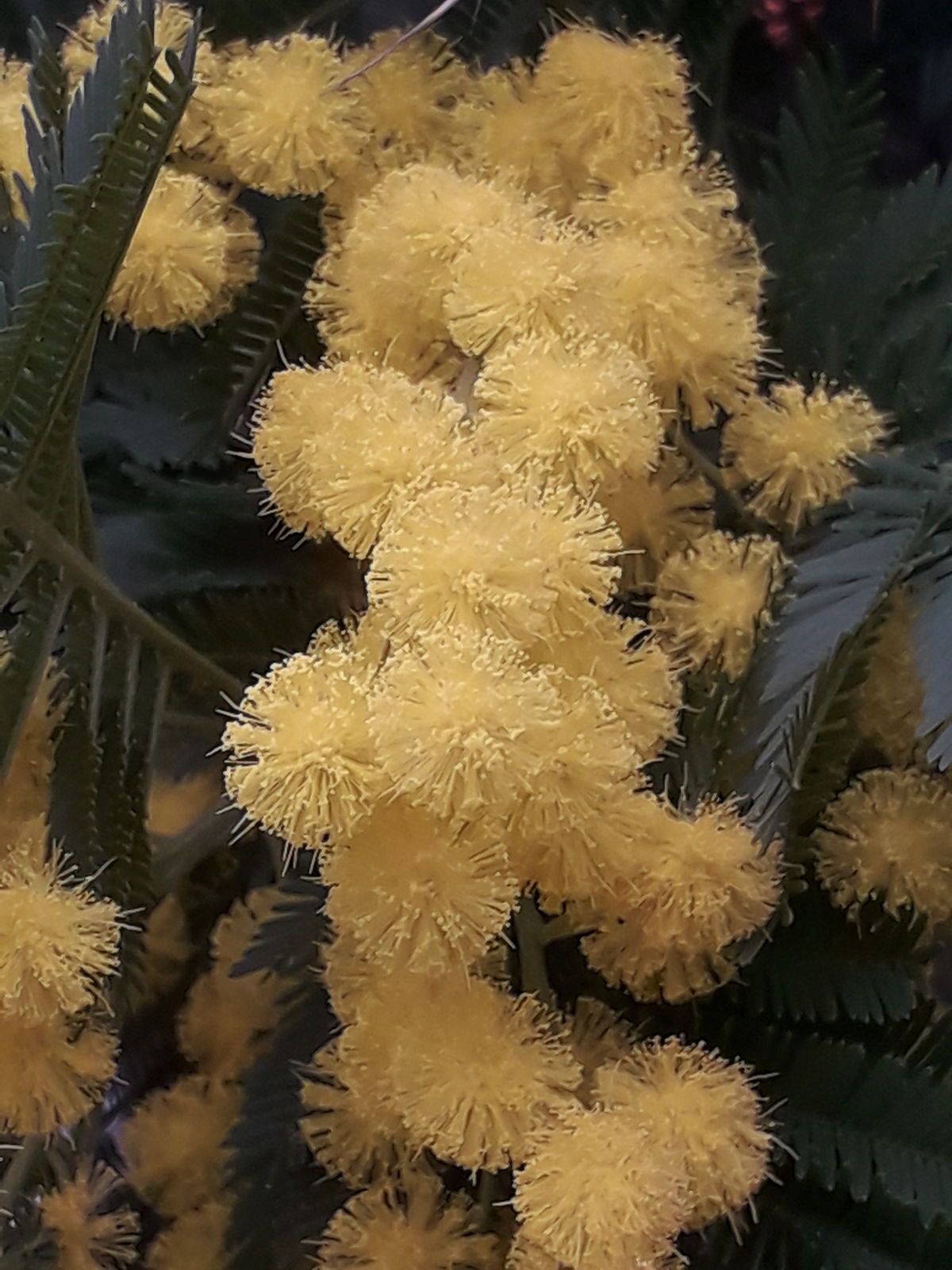Mimosa, Silver Wattle
acacia dealbata
Also known as: ["Silver Wattle","Blue Wattle","Swamp Wattle"]
Overview
A fast-growing, deciduous tree native to southeastern Australia, known for its feathery foliage and vibrant yellow flowers in late winter to early spring.
Benefits & Perks
["fast growing","fragrant flowers","wildlife attractant (bees, butterflies, birds)","drought tolerant"]
Botanical Classification
| Phylum: | Magnoliophyta |
| Class: | Magnoliopsida |
| Order: | Fabales |
| Family: | Fabaceae |
| Genus: | Acacia |
| Botanical Name: | Acacia dealbata |
Plant Characteristics
Basic Information
- Category: Trees
- Suitable Location: outdoor garden in a sheltered spot, or large container in a sunny area
- Suitable For:
- Is Weed: No
- Allergenicity: moderate
Environmental Needs
- Climate: {"temperatureRange":"5–30°C"}
- Hardiness: {"zones":"9–11"}
- Misting: rarely required, only if ambient humidity is very low
- Drainage: Fast-draining to prevent root rot.
- Soil Type: Well-draining, slightly acidic to neutral soil mix with organic matter.
Maintenance Level
- Maintenance Level: moderate
- Toughness Level: moderate
- Pruning Frequency: Annually in late winter or early spring before new growth begins.
- Pruning Intensity: Moderate; remove up to one-third of old growth if needed.
Care Details
Ideal Sunlight Coverage:
Full sun (6–8 hours of direct sunlight daily); tolerates partial shade but may become leggy.
Sunlight Tolerance Tips:
Acclimate new plants to full sun gradually over 1–2 weeks to avoid scorching. Protect from intense midday sun in hot climates, especially when young.
Care Requirements
Care Difficulty
moderatemoderate
Sunlight
full sun to partial shade
Full sun is essential; protect from harsh afternoon sun in arid regions; rotate regularly for even growth.
Watering
every 7–10 days during active growth, less frequently in winter
Water thoroughly until runoff, ensure good drainage, and avoid frequent shallow watering.
Soil
well-drained, slightly acidic to neutral soil
pH: 6.0–7.0 (slightly acidic to neutral).
Ensure excellent drainage; avoid heavy clay soils; amend with organic matter if needed.
Temperature
Prefers mild temperatures (50–75°F or 10–24°C); tolerates brief frosts but thrives in temperate climates.
Protect from frost; water deeply in heat; avoid sudden temperature swings.
Fertilizing
every 4–6 weeks during spring and summer
Fertilize only in spring; avoid over-fertilizing; use a balanced formula.
Propagation
Methods
Stem cuttings or seed; stem cuttings are more reliable for home growers.
Step-by-Step Propagation Guide
- Take 4–6 inch cuttings.
- Remove lower leaves.
- Dip in rooting hormone.
- Plant in medium.
- Keep moist and warm.
Best Time: Late spring or early summer when the plant is actively growing.
Environment
Warm (65–75°F or 18–24°C), high humidity (70–80%), and bright indirect light.
Medium
Well-draining mix of perlite and peat moss or cactus mix.
Hormone
Recommended to use rooting hormone for faster and more reliable rooting.
Timeline
Roots may develop in 4–8 weeks; establish in new pot after 3–6 months.
Tools Needed
Pruning shears, rooting hormone, small pots, misting spray bottle.
Quick Tips
Use semi-hardwood cuttings; maintain humidity with a plastic bag; keep out of direct sun.
Pruning & Repotting
Pruning Guide
Method
Selective thinning and heading back to promote branching.
Pruning Plan
Prune to maintain shape, encourage bushiness, and remove dead or weak growth.
Tools
Pruning shears, loppers, gloves, disinfectant.
Checklist
Disinfect tools; prune before flowering; remove dead wood; shape evenly.
Repotting Guide
Best Season
Early spring before active growth starts.
Pot Size
Increase pot size by 2–3 inches in diameter.
Method
Remove plant gently; trim roots if crowded; repot in fresh, well-draining soil with a slightly larger pot.
Suggestions
Repot every 2–3 years or when roots fill the container; beneficial for young plants to encourage growth.
Checklist
Check root bound status; trim roots if needed; use fresh soil; ensure good drainage.
Advanced Care Tips
Watering Mastery
Watering Checklist
Check soil moisture before watering; water deeply; ensure drainage; adjust frequency by season.
How to Apply Water Properly
Water at the base of the plant, targeting the root zone, until water penetrates the root ball and drains freely from the bottom. Water early in the morning to minimize evaporation and fungal issues.
Watering Schedule Tips
Water deeply once a week during active growth in spring and summer; reduce frequency to every 2–3 weeks in fall and winter, allowing soil to dry between waterings.
Soil Improvement
Add perlite or coarse sand for drainage; incorporate compost for fertility; ensure pH is within preferred range.
Temperature Stress Management
Signs of Temperature Issues
Chlorosis or leaf drop in extreme heat; browning or dieback in prolonged cold.
Cold Stress
Low temperatures slow growth and can cause root damage or dieback, especially in young plants.
Solution: Protect with frost cloth or mulch in winter; plant in a sheltered location; avoid overwatering in cold.
Hot Stress
Excessive heat can lead to leaf scorch, wilting, and reduced flowering.
Solution: Provide afternoon shade if possible; increase watering during heatwaves; use mulch to retain soil moisture.
Fertilizing Guide
Fertilizing Checklist
Check soil pH; apply fertilizer in spring; water after fertilizing; avoid contact with roots.
Fertilizing Method
Use a balanced, slow-release fertilizer in early spring; avoid high-nitrogen formulas; reduce or stop feeding in fall and winter.
Common Problems & Solutions
Toxicity Warning
Cats
Slightly ToxicCats are also susceptible to the cyanogenic glycosides in Acacia dealbata. Ingestion can cause gastrointestinal distress and mild systemic effects, though cats may be more sensitive to certain toxins.
⚠️ Symptoms:
🌿 Toxic Parts:
⚡ Toxic If:
if eaten
Dogs
Slightly ToxicIn dogs, ingestion of Acacia dealbata can lead to mild to moderate toxicity due to cyanogenic glycosides. The effects are similar to those in humans, with potential for gastrointestinal upset and mild systemic effects.
⚠️ Symptoms:
🌿 Toxic Parts:
⚡ Toxic If:
if eaten
Humans
Slightly ToxicAcacia dealbata contains cyanogenic glycosides, which can release cyanide upon ingestion. The physiological impact is primarily due to the inhibition of cellular respiration, leading to hypoxia and potential systemic toxicity.
⚠️ Symptoms:
🌿 Toxic Parts:
⚡ Toxic If:
if eaten
Frequently Asked Questions
Q: Is Acacia dealbata suitable for cold climates?
A: It is not cold hardy and prefers mild climates, though it can tolerate light frosts.
Q: Does Acacia dealbata attract wildlife?
A: Yes, its fragrant flowers attract bees, butterflies, and birds.
Q: Is Acacia dealbata toxic to pets?
A: It is mildly toxic to dogs and cats if ingested.
Quick Reference
| Family: | Fabaceae |
| Care: | moderate |
| Light: | full sun to partial shade |
| Water: | every 7–10 days during activ |
Get Expert Care Tips
Download the Plantious app for personalized care reminders and plant identification!
Google Play App Store








